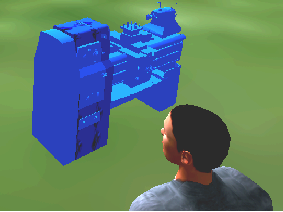

 Second
Life:
A New Approach In Professional Education In The Study Of
Work Safety. VIEGAS, Sílvio Cesar; dos
SANTOS, Renato P. IEEE Latin
America Transactions, v.10, n.1, jan. 2012.
Second
Life:
A New Approach In Professional Education In The Study Of
Work Safety. VIEGAS, Sílvio Cesar; dos
SANTOS, Renato P. IEEE Latin
America Transactions, v.10, n.1, jan. 2012.Abstract
The ICT (Information and CommunicationTechnologies) are present with
great intensity in education and
has also presented highlighting the professional education with
tools for data analysis, graphics, simulation, virtual reality
and augmented reality. The knowledge gained with ICTs are
used in practical activities in industrial operations. The student
examines machine elements through simulations, yet during the
practices with machines and equipment, errors occur from
simple forgetfulness of use of PPE (Personal Protective
Equipment), lack of parameters in the machinery, not
removal of the ornaments the body, can somehow put at risk
the life of the students in these settings wrong or manipulation of
machinery and equipment that can cause accidents. Our
proposal is to use a virtual reality tool specifically the SL (Second
Life), having a friendly interface, programming features
and usability features immersive, so we developed the
simulation and representation of machine failures that could
occur on the day of an industry. During the use of simulators in
SL, the student learns from those mistakes in the virtual world,
serving as a warning so it does not perform the same mistakes in
the real world, where unsafe acts can danger your life up. The
proposal also gives the possibility to use a machine for
machining of smaller proportions built specifically for
educational activities, plus devices that facilitate the use
by PWD's (People with disabilities), connected to the virtual
world.
Referências
Voltar a Artigos Científicos.
Voltar ao começo desta página
Voltar à página principal de Física Interessante